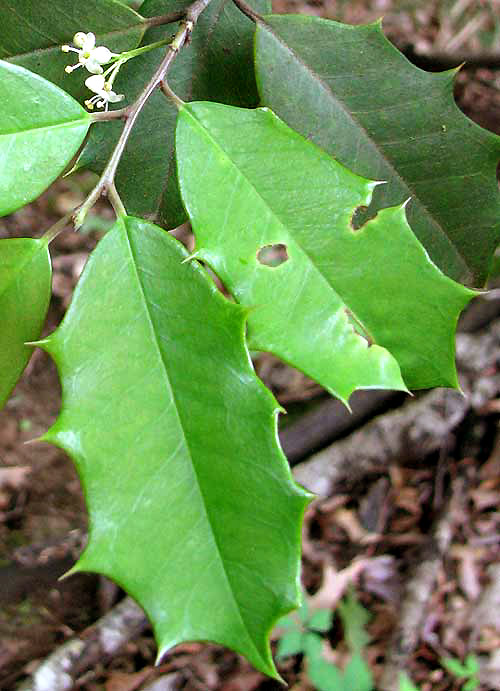Excerpts from Jim Conrad's
Naturalist Newsletter
from the April 29, 2012 Newsletter issued from the woods of the Loess Hill Region a few miles east of Natchez, Mississippi, USA
AMERICAN HOLLY FLOWERING
On the steep slopes of moist, shadowy, well-protected ravines here occasionally you find American Hollies, ILEX OPACA, and nowadays they're flowering, as seen below:

American Hollies are a different species from the English Holly often planted as ornamentals. American Holly bears larger leaves and produces fewer fruits. Hollies come in male or female trees (they're dioecious), and you can tell from the flowers in the upper, left of the above picture that here we have a male tree. A close-up of a male flower with its four out-thrusting stamens is shown below:

On a female flower the stamens would be rudimentary and there'd be an ovary -- the future fruit -- in the blossom's center.
Maybe because people are so used to seeing English Hollies planted up north often it's assumed that they're northern trees. In fact, American Holly is mainly native to the US Southeast, though along the Coastal Plain it reaches as far north as southern Connecticut. Around here it's strictly an understory tree.
The fruits are mildly toxic but you must eat a lot of them to get sick. Birds, deer, squirrels and other animals eat the fruits, which are drupes bearing several hard "stones." No critter seems to relish them, though, saving them mostly to serve as "emergency food" when other foods run out. That might explain why we see hollies holding their red fruits deep into the winter.